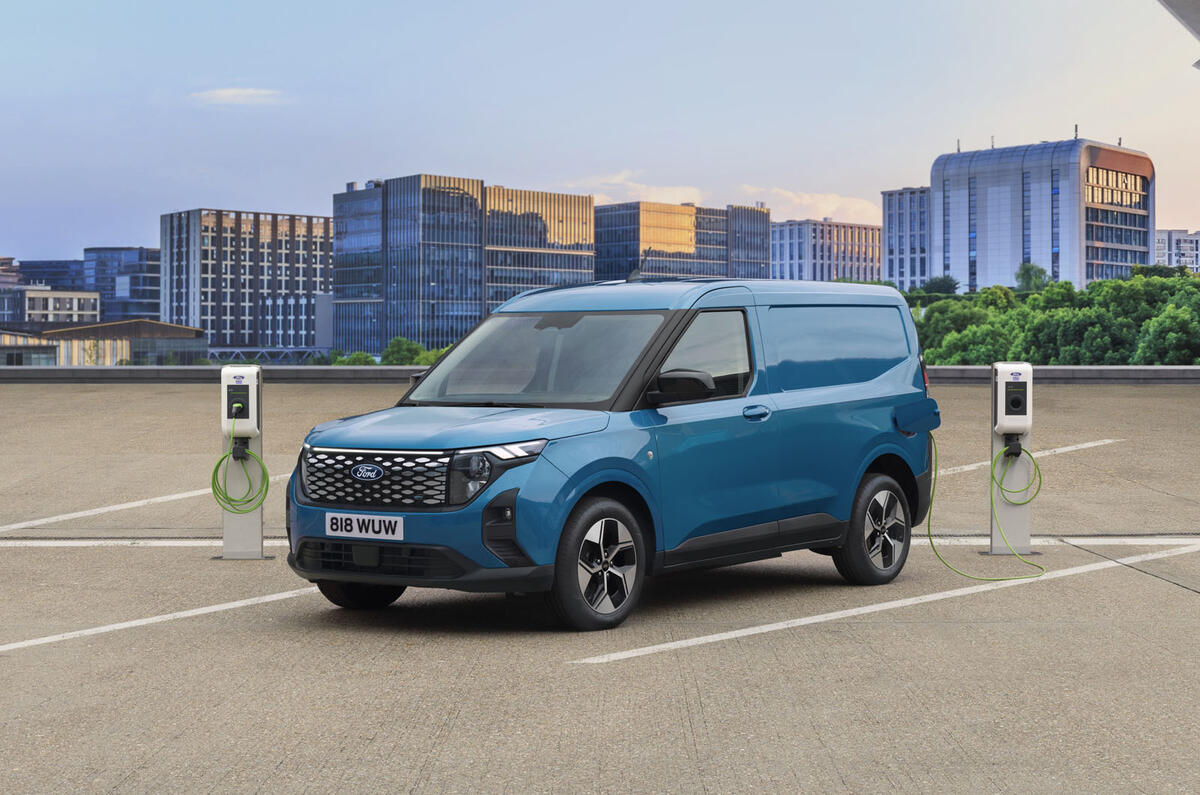The UK’s biggest van seller, Ford, is also the biggest laggard on tough government-mandated EV sales targets when it comes to the main players, new figures show.
So far this year, Ford has sold 2443 electric light commercial vehicles (LCVs), equating to 5.4% of its 45,190 LCV total and some way short of the 16% required by the ZEV mandate, according to EV think tank NewAutoMotive.
By contrast, the nation's second biggest van seller, Volkswagen, is running at 19% so far this year, thanks mainly to the commercial version of the ID Buzz. Vauxhall in third has an EV share of 17%.
Overall electric van sales to the end of May hit 6877, putting EVs at 7.6% of the 133,798 total in the sub-3.5-tonne category, according to the Society of Motor Manufacturers and Traders (SMMT).
Van makers continue to struggle to persuade buyers to make the shift to cleaner transport, being thwarted by higher prices, range anxiety and a lack of penalties for buyers choosing diesel again.
There are some benefits for buyers, though. The government announced in February that it would extend its Plug-in Van Grant (PiVG) for another year, worth £2500 off the cost of smaller vans and £5000 of larger models up to 4.25 tonnes.
The cost of an electric van is also 100% claimable from a company’s taxable profits.
The SMMT is pushing the government to do more to persuade business users to switch, including investing in a more van-suitable charging infrastructure and giving preferential treatment for depot grid connections.
However, in April the government made a raft of changes to the ZEV mandate that would take some of the pressure off van makers, in effect reducing the 16% target this year.
The top-line figures essentially stay the same and the 2035 date remains for 100% zero-emission sales. But this year, for example, van makers can halve their EV target by promising to overdeliver in future years up to 2030. That promise was extended to include sales in 2027 through 2030, with the target dropping to 10% by 2029.
Van makers also don’t have to show any improvement in CO2 emissions within their ICE fleet between 2030 and 2035. Unlike with cars, they don’t have to hybridise during that period.
Perhaps the most useful change, depending on the brand, is the ability to use excess electric car sales to count within their electric van target, with one electric car counting as 0.4 electric vans.






Add your comment